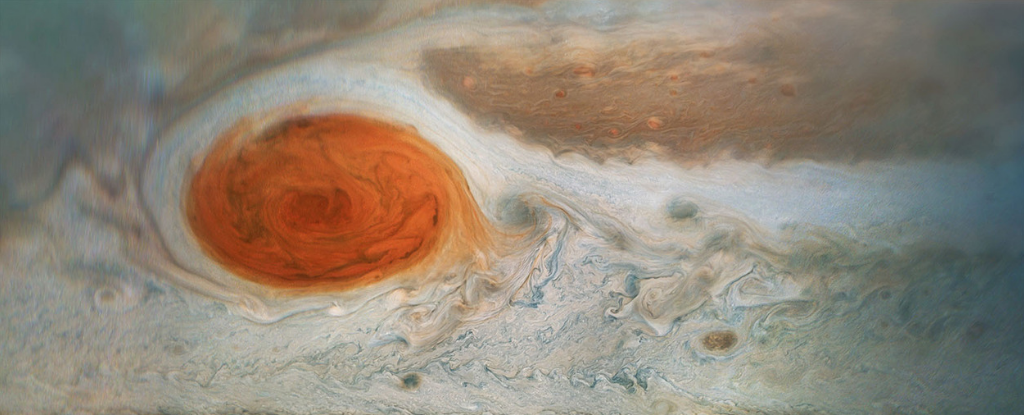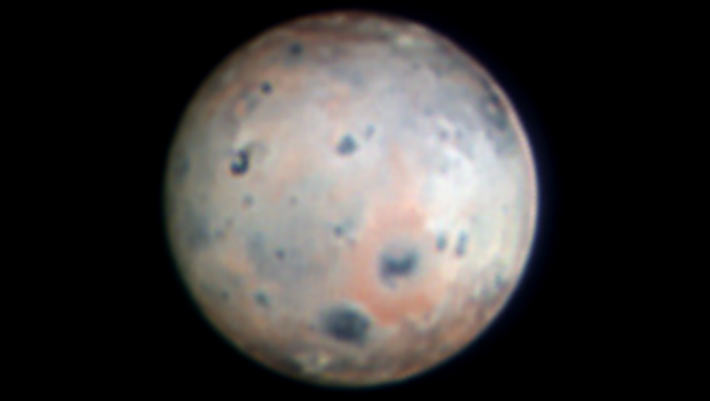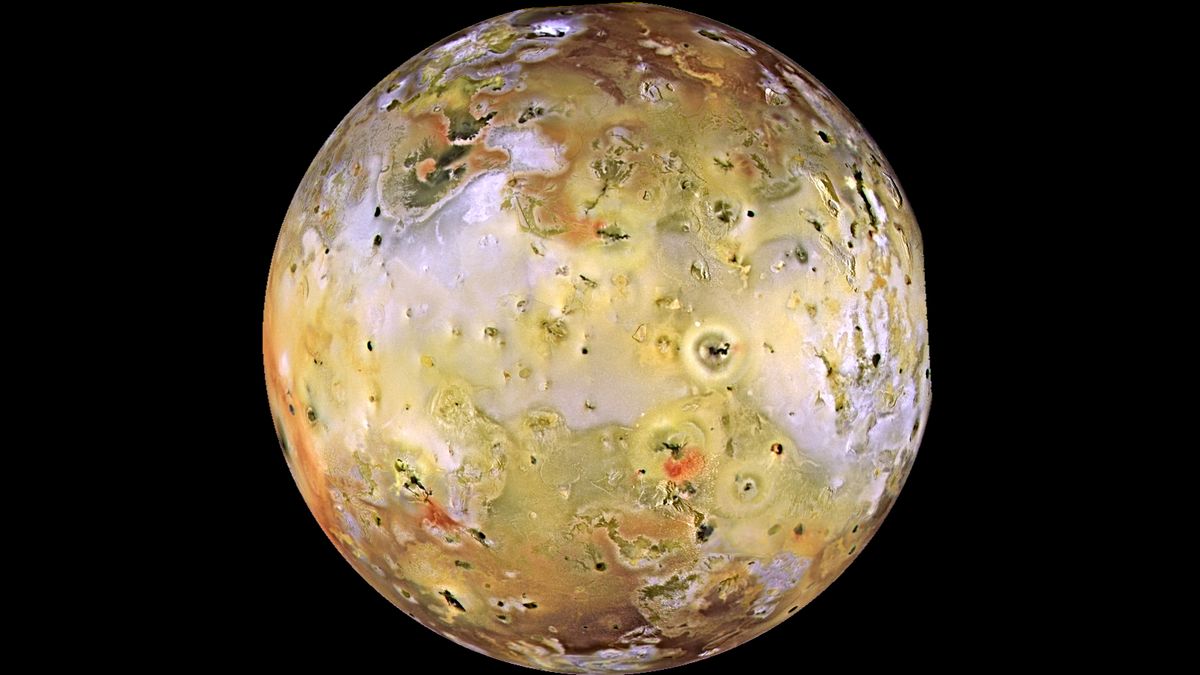
Jupiter's Great Red Spot (GRS) is one of the Solar System's defining features. It's a massive storm that astronomers have observed since the 1600s. However, its date of formation and longevity are up for debate.

Using the SHARK-VIS instrument on the Large Binocular Telescope on Mount Graham in Arizona, the United States, astronomers have captured the highest resolution optical images of Io ever obtained from a ground-based telescope.

Imagery from the solar-powered spacecraft provides close-ups of intriguing features on the hellish Jovian moon.

Using NASA’s Juno spacecraft, scientists have calculated the rate of oxygen production on Jupiter’s moon Europa — the first time any spacecraft had directly measured charged oxygen and hydrogen particles from the moon’s atmosphere.

On February 3, 2024, NASA’s Juno spacecraft made a second close flyby of Io, the third largest of Jupiter’s moons. We were able to see a volcunic erruption there like never before.

Researchers using the NASA/ESA/CSA James Webb Space Telescope's NIRCam (Near-Infrared Camera) have discovered a high-speed jet stream sitting over Jupiter's equator, above the main cloud decks.

Now, using the James Webb Space Telescope, astronomers have found carbon on Europa’s surface, which likely originated in this ocean. The discovery signals a potentially habitable environment in the ocean of Europa.

NASA's Juno spacecraft orbiting Jupiter frequently encounters giant swirling waves at the boundary between the solar wind and Jupiter's magnetosphere.

Recent research shows that the changes in Jupiter's magnetic field are causing these mysterious colour shifts.

Some of the asteroids NASA's Lucy mission will visit are still more than 330 million miles away from the spacecraft, but despite the great distance and the comparatively small sizes, Lucy caught views of four of its targets in late March.

Astronomers have counted 12 previously unknown moons in orbit around our Solar System's biggest planet, bringing the known total to 92, and leaving Saturn, with its measly count of 83, in the dust.

Researchers had discovered a “heat wave” extending across 10 Earth-diameters in the atmosphere of our solar system’s biggest planet, Jupiter. In other words, Jupiter’s atmosphere is hundreds of degrees hotter than previously thought.

Strange double ridges on the surface of Jupiter's ice moon Europa could be signposts to shallow reservoirs of water.

Jupiter's moon Europa is a prime candidate in the search for life. The frozen moon has a subsurface ocean and the new research shows that the moon is pulling oxygen down below its icy shell.

New findings from NASA's Juno probe orbiting Jupiter provide a fuller picture of how the planet's distinctive and colorful atmospheric features offer clues about the unseen processes below its clouds.